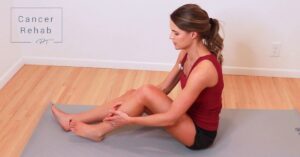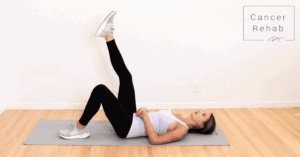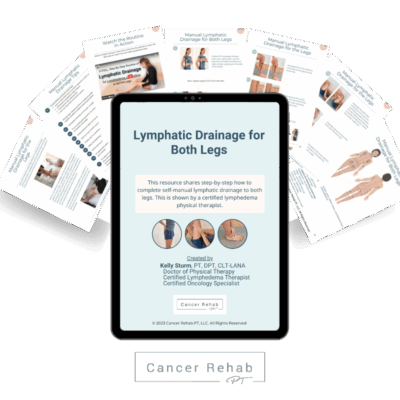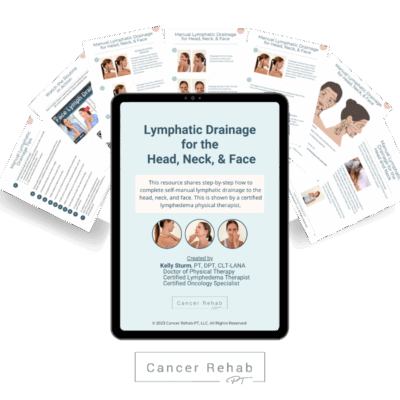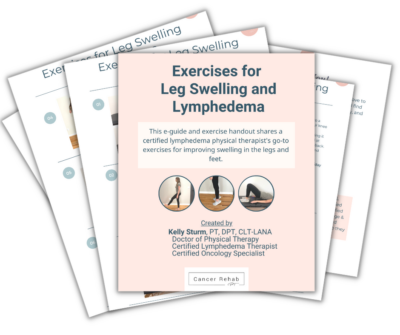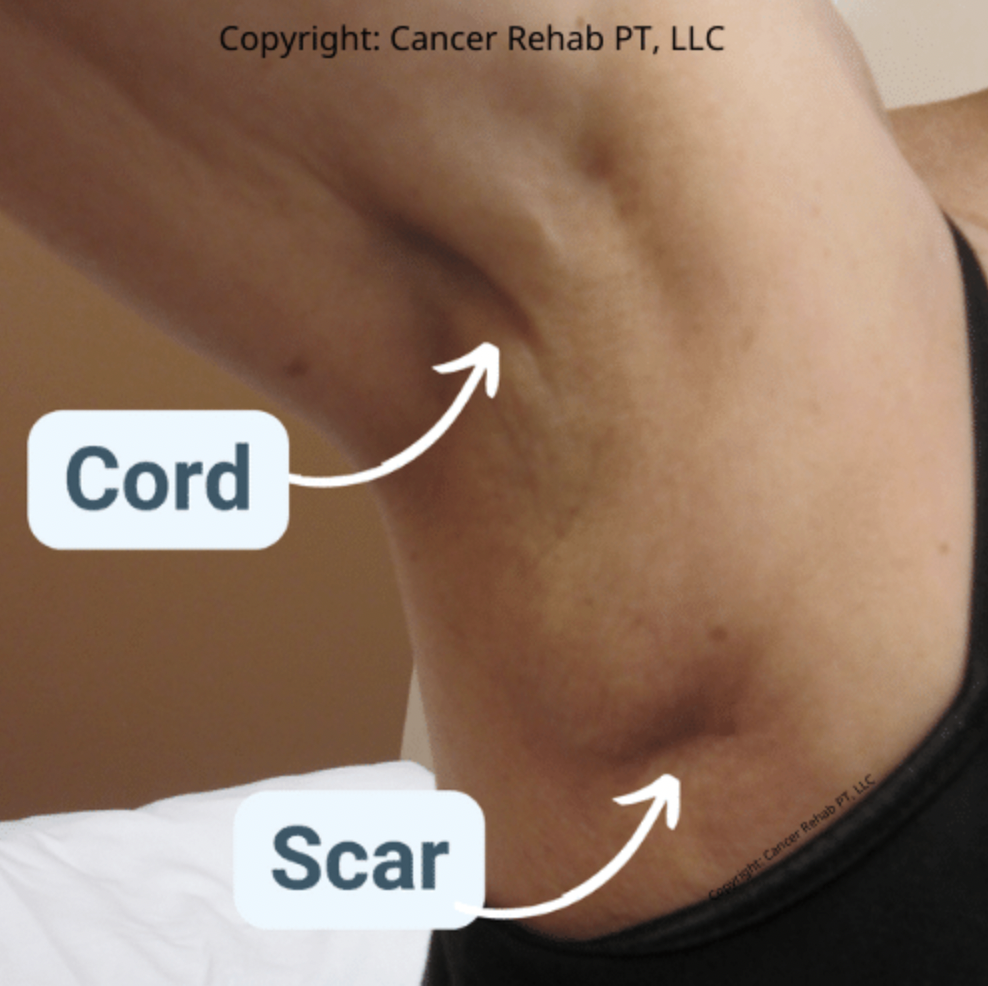Cording after a mastectomy is common, but you don’t have to accept it as your new normal. Also known as the Axillary Web Syndrome (AWS), cording is a common side effect that can develop after breast cancer surgery.
Characterized by tight, rope-like structures or bands of tissue in the armpit area, cording can be painful and limit your range of motion. However, it’s possible to get rid of cording after a mastectomy.
I’m a Board-Certified Oncology Clinical Specialist, and in this guide, you’ll learn the most effective management strategies that will help you treat the Axillary Web Syndrome.
What Is Cording After Breast Cancer Surgery?
Cording, or Axillary Web Syndrome, manifests as taut, cord-like bands of tissue that develop under the skin in the armpit area. These bands may extend down the arm toward your elbow and hand, resembling cords or guitar strings.
Cording typically develops 2-8 weeks after breast cancer surgery, but it can also happen months or even years later.
Causes and Risk Factors of Cording
The exact cause of cording is not fully understood, but it is believed to result from trauma or injury to the lymphatic vessels and surrounding tissues during breast cancer surgery. Having a mastectomy is a significant risk factor.
Factors such as how many lymph nodes you had removed, the presence of scar tissue, and individual variations in anatomy can increase your risk of developing Axillary Web Syndrome. Additionally, radiation therapy and chemotherapy may contribute to the development of cording symptoms or make them worse over time.
Symptoms of Cording After Mastectomy
People who develop the Axillary Web Syndrome typically describe it as a sensation of tightness, pulling, or discomfort in the affected area. The cords may feel palpable and tender to the touch, and you may notice a limited range of motion or stiffness when moving your arm.
In some cases, cording can be accompanied by swelling, bruising, or visible skin changes in the affected area. Symptoms vary in severity and may persist for several weeks or months after mastectomy or breast cancer treatment.
Pictures of Cording After Mastectomy
Here are a few pictures of cording after mastectomy to help you visualize what Axillary Web Syndrome can look like. Keep in mind that sometimes the cords are invisible. You may still have cording even if your armpit and inner arm don’t show any visible changes.
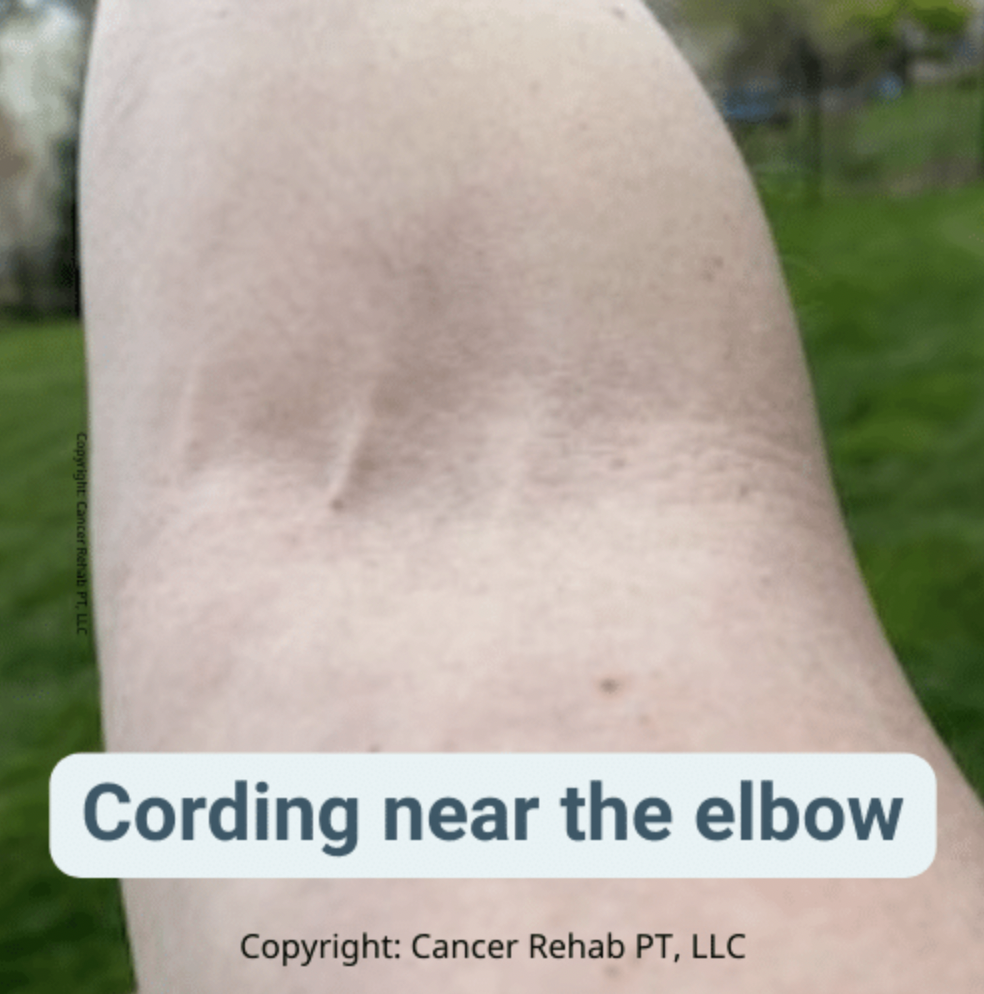
Can You Treat the Axillary Web Syndrome after Breast Cancer Surgery?
Yes! It’s possible to get rid of cording with an effective treatment plan. Several treatment options exist, and I’m going to share some of them in the sections below. If you want more in-depth information about the Axillary Web Syndrome (cording), learn more about my online program Breast Cancer Rehab.
7 Treatments for Cording After Mastectomy
1. Stretching Exercises
Stretching exercises are a gentle yet effective approach to alleviate discomfort, improve flexibility, and promote lymphatic drainage when dealing with Axillary Web Syndrome (AWS). They can help release tight cords, reduce stiffness, and enhance range of motion.
You should do low-intensity stretching exercises that focus on the pec area and open up your chest wall. If you don’t know where to start, I demonstrate a few of my favorite exercises in my YouTube video below.
2. Nerve Glides
Nerve glides, also known as nerve flossing, are a great way to mobilize the affected nerves and surrounding tissues after mastectomy or another type of breast surgery.
To do nerve glides, raise your arm up to 90 degrees and gently bring it toward your back. If you start feeling tension or pulling down your arm, you can stop there.
If you don’t feel the stretch yet, bend your wrist back and forward to intensify it. If you want to make the stretch even deeper, tilt your head, bringing your ear to your shoulder away from your arm.
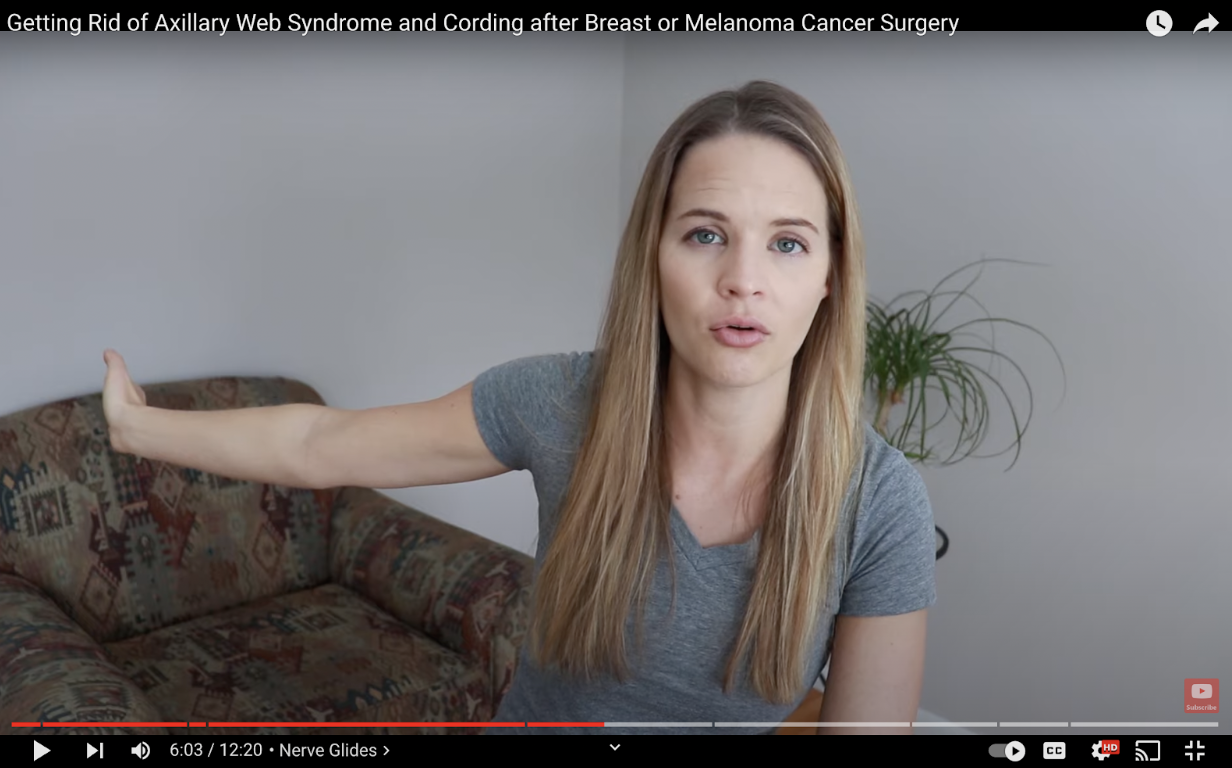
The stretch in your arm should feel mild and not painful. If you feel any pain or discomfort, stop the exercise. Don’t overstretch, or you may feel sore!
3. Myofascial Release
Myofascial release, also known as soft tissue mobilization, is a massage technique that focuses on releasing tension and improving mobility in the fascia, the connective tissue that surrounds muscles, nerves, and blood vessels. This treatment targets the underlying fascial restrictions that contribute to the development of cording.
Myofascial release sessions may be performed by a trained therapist, but you can also learn how to do them at home. I show the technique in my YouTube Video!
4. Manual Lymphatic Drainage (MLD)
Manual Lymphatic Drainage (MLD) is a specialized massage technique designed to stimulate the lymphatic system and reduce swelling. Mobilizing the lymph fluid can alleviate the tight cords in your arm.
MLD sessions typically include gentle strokes and rhythmic movements directed toward the lymph nodes, promoting the drainage of fluid and easing discomfort in the affected area.
You can learn more in my Both Arms Manual Lymphatic Drainage Guide or Breast Cancer Rehab.
5. Compression Therapy
Compression therapy involves wearing compression garments or bandages to apply external pressure to your affected arm.
This practice can reduce swelling and alleviate symptoms of cording after mastectomy. Compression garments should be properly fitted. Your healthcare provider can recommend the most suitable compression garments based on your individual needs.
6. Scar Mobilizations
Scar mobilizations focus on releasing adhesions and improving scar tissue mobility after radiation or surgery. This technique is not as gentle as Manual Lymphatic Drainage or myofascial release, but it can help break down hardened scar tissue, release lymph fluid, and restore flexibility in the affected area.
Your healthcare provider can give you guidance on safe and appropriate scar mobilization techniques for cording after mastectomy.
7. Heat Therapy
Heat therapy, such as warm compresses or heating pads, can help relax muscles, increase blood flow, and reduce tension in the affected area. Applying heat to the armpit and inner arm can help alleviate discomfort and promote relaxation of the cords.
Heat therapy should be used cautiously to avoid burns or skin irritation. Follow your healthcare provider’s recommendations for safe and effective heat therapy techniques.
Does Cording Ever Go Away?
Yes! In many cases, cording after a mastectomy gradually improves and resolves with time and appropriate treatment.
Staying as consistent as possible with your stretching exercises, manual lymphatic drainage, compression therapy, and other management strategies can help alleviate symptoms and heal affected tissues faster. You can learn more about managing cording in my program Breast Cancer Rehab.
Cording after Mastectomy FAQs
How do you get rid of cording after breast cancer surgery?
There are different techniques that can help you get rid of cording after breast cancer surgery. Stretching exercises that target the pec area and chest wall help release tight cords and reduce stiffness. Nerve glides can help mobilize affected nerves and surrounding tissues. Manual Lymphatic Drainage, compression therapy, scar mobilizations, myofascial release, and heat therapy are other tools that you can use to get rid of cording after mastectomy or another breast cancer surgery.
What does cording feel like?
Cording often feels like a sensation of tightness, pulling, or discomfort in the affected area, commonly the armpit and inner arm. You may feel like you have tight guitar strings beneath your skin. The affected area may be tender to the touch, and you may experience a limited range of motion or stiffness when moving your arm.
Does cording lead to lymphedema?
No, cording doesn’t lead to lymphedema. That said, it may be associated with lymphatic dysfunction and fluid accumulation in the affected area. Manual Lymphatic Drainage (MLD) and compression therapy can be helpful when managing cording.
Does cording lead to breast cancer recurrence?
No, cording doesn’t lead to breast cancer recurrence. While it can be uncomfortable and limit your range of motion, it does not increase the risk of breast cancer coming back.
How long does it take for cording to go away?
It varies from person to person and depends on various factors such as the severity of the cording, individual response to treatment, and how consistent you are with management strategies. Typically, cording improves over the course of several weeks. Early intervention and consistent therapy can speed up the process.
How painful is cording?
It depends. For some, cording may cause only mild discomfort or a sensation of tightness in the armpit and inner arm. For others, it can be more intense and interfere with daily activities.
What exercises help cording?
Stretching exercises targeting the pec area are particularly beneficial when managing cording. These exercises help release tight cords, reduce stiffness, and enhance your range of motion. Nerve glides (also known as nerve flossing) can be incredibly helpful as well.

